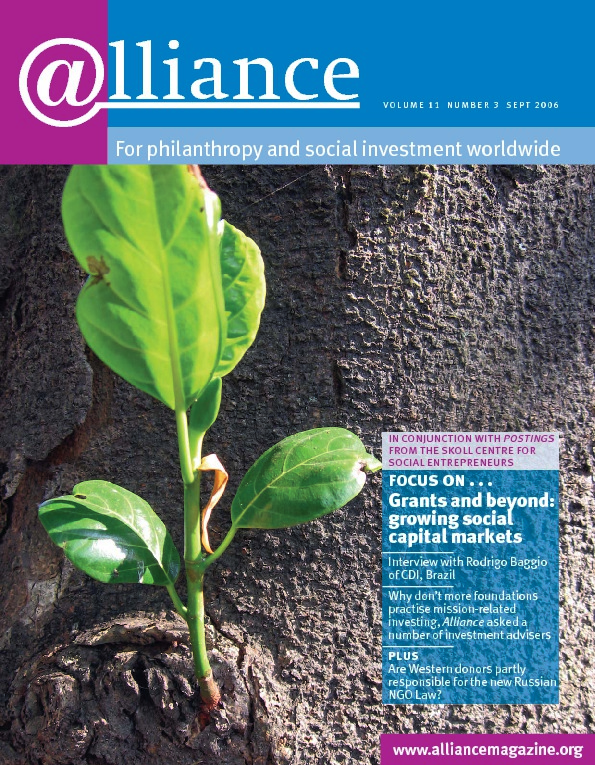Greater access to finance would help thousands of viable small, grassroots enterprises engaged in local development and generating employment in varied fields. More needs to be done to make this happen, and to make development investment a safe, profitable and attractive option for private and institutional investors. Risk mitigation features high on this agenda.
Recent consultations jointly carried out by the Global Exchange for Social Investment – GEXSI (London and Berlin) and VantagePoint (Zurich) indicate that affordable risk mitigation, and especially standardized insurance options, could foster and mainstream for-profit development investment. However, to make such risk mitigation affordable, some commercial insurance premiums would need to be softened by way of public subsidies. This is particularly needed in ‘poor governance’ environments.
The suggestion is that development aid agencies (and possibly some ‘mega’ foundations) should leverage their funds by way of risk mitigation, guarantees and insurance subsidies to effectively back up private investments among the world’s poorest ‘grassroots’ entrepreneurs. Risk mitigation ‘safety nets’ will in turn allow venture capital investors, and especially larger institutional investors (eg managers of pension funds or large endowments), to integrate development investment into their portfolios.
Pilot schemes to size up actual insurance needs for live development investment portfolios are important milestones in modelling such safety nets. GEXSI and VantagePoint are currently working with a small number of funds/portfolios and insurers on this. ‘Soft’ development finance (DFID, SECO, GTZ) as well as private foundation money has already been used in a few guarantees and structured risk schemes, especially in backing up microfinance. MIGA (Multi-Lateral Investment Guarantee Agency) has introduced insurance for small and medium size enterprise investments on a ‘one-off’ basis.
Standardized vehicles and/or a specialized facility will be needed to bring risk mitigation to a larger scale. A ‘Development Investment Risk Mitigation Facility’ would be one option. It could provide a one-stop shop, working with commercial insurers, IFIs and commercial banks to provide comprehensive risk mitigation services.
But risk mitigation is only part of the answer. There are other questions that investors want to see addressed: transaction costs are too high, pipeline development may be a bottleneck, and unlisted ventures may not be eligible. In short, the entire development investment market place needs improvement.
For more information contact GEXSI CEO Maritta Koch-Weser at kochweser@gexsi.org or visit http://www.gexsi.org





Comments (0)